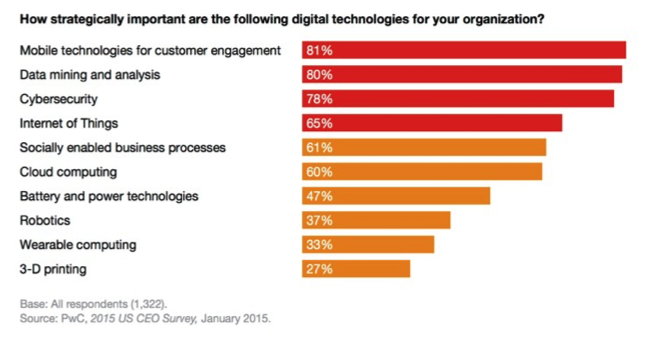By Doug Stephens

When you drive your car to work are you enjoying a combustion engine propulsion experience or simply driving your car? When you do your laundry are you reveling in a hydroelectrically agitated emulsification experience or simply cleaning your clothes? When you watch TV, is that a light emitting diode transmission experience or just entertainment? Posed this way, these questions seem clearly rhetorical. It’s pretty obvious in each case that technology is not the experience but merely the platform upon which the experience is delivered. In other words, these are not “technological” experiences. They are simply experiences that incorporate technology.
The Digital Bias
Yet each day I speak with, read about or hear of brands and retailers setting out with the sole intent of creating “digital experiences” for their customers. In fact, many have gone so far as to establish in-house labs with the expressed intent of pumping out an endless stream of digital experiences. Most, it seems, are loosely tasked with doing something with mobile, beacons, Wi-Fi, location based services and other technologies, all with an eye to injecting digital, often clumsily, into customer interactions. A recent survey of CEO’s (below) even confirms a sort of digital pre-occupation, with respondents rating everything from mobile technologies to the internet of things as being “strategically important” to their businesses. Regrettably, I can assure you that a far smaller percentage of CEO’s even fully understand what many of these technologies are. Nonetheless, digital experiences seem to be de rigeur in business today. Ironically though, I think it’s exactly this misplaced sense of importance on digital that is causing so many retail innovation efforts to fall flat.

Results of a 2015 PwC survey of over 1300 CEO’s
Retailers really ought not be aiming to create digital experiences at all. What they should be setting out to do is to design unique, memorable, valuable experiences – some of which may be best animated with digital technologies. Rather than treating the absence of digital as the problem, retail leaders should instead address the glaring experiential shortfalls in their business – some of which may be aided using digital solutions. It may sound like a matter of semantics, but in fact it’s a critical distinction that’s central to building a meaningful customer experience strategy. In other words, the starting point is not digital but rather to design better experiences.
It Starts With A Story
This approach is best validated by looking at the practices of leading experience design firms. Disney, for example plans its theme parks beginning with compelling, detailed and vivid stories. Longtime Disney designer John Hench once said, “Story is the essential organizing principle behind the design of Disney theme parks.” Every moment at every attraction – even the wait in line – is an integral part of the story. Hench further held that the “minute details that produce the visual experience are really the art of the Disney themed show, it’s greatest source of strength.” So, once the story is clearly articulated, and every small detail story-boarded, then and only then, do Disney designers work back to consider the combination of technologies, structures, effects and cast members that will enable them to tell each story best. This excruciatingly detailed process is what Disney calls imagineering.
Similarly, great retail companies should be approaching their customer experience as a powerful, live enactment of their unique brand story. They need to break their story into a series of moments of truth and then work painstakingly to apply brilliant design intent to each small but critical customer interaction. Entering the store, browsing selections, learning and trialling products, receiving service, paying, arranging shipping, exiting the store, and even after-sale support are all critical turning points in the brand story that must be meticulously considered and elegantly designed to be deliberate and delightful. Once that unique brand experience is fully imagined, then and only then can decisions be made as to how it could or should be animated. Some of these experiences may be best delivered digitally, some may not and others still may come to life through some combination of digital and analog assets. Or as Steve Jobs so eloquently put it, “You’ve got to start with the customer experience and work back to the technology.”

Recreational Equipment Inc.’s meticulously detailed footwear journey map
So, while I’m an evangelical proponent of leveraging digital wherever it makes sense, I’m an even greater believer that digital for digital’s sake is a road to nowhere. Whether you touch your customers through the use of technology or not, what really matters is that the unique brand experience they enjoy is so utterly remarkable they long to do it again and again and will share their experience with anyone who will listen.
Frankly, the world really doesn’t need another app, beacon, push notification or RFID tag. What it needs are jaw-dropping experiences, distilled from remarkable brand stories and brought to life with brilliant combinations of art, science and humanity.
Now, can you imagine that!

